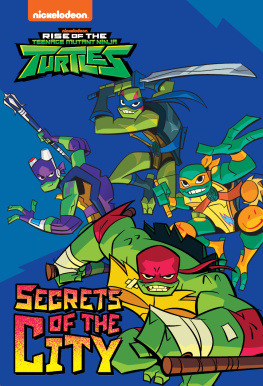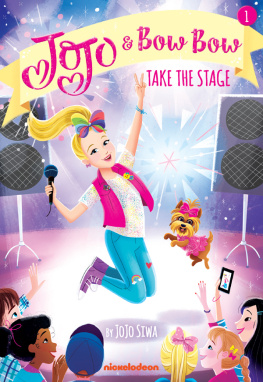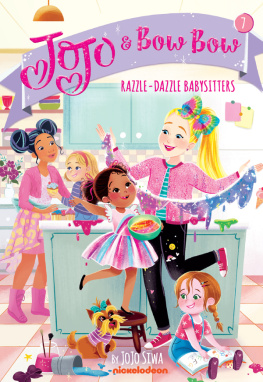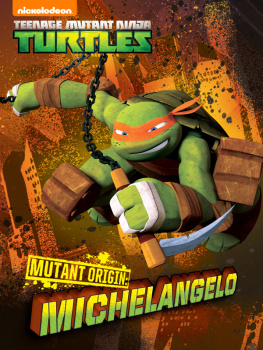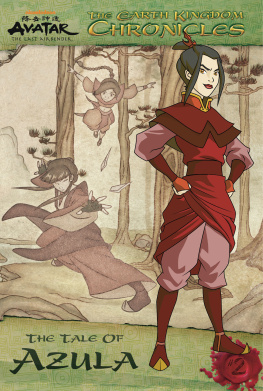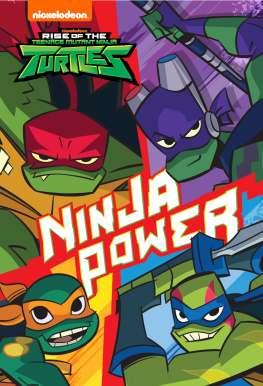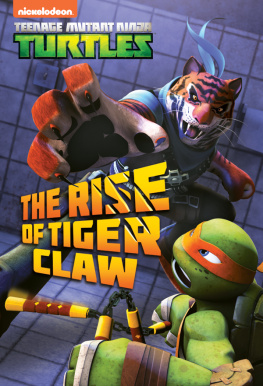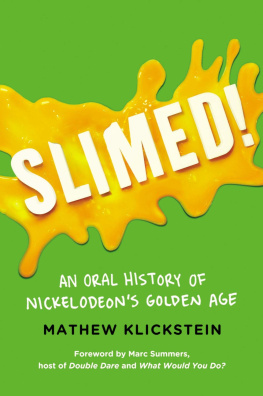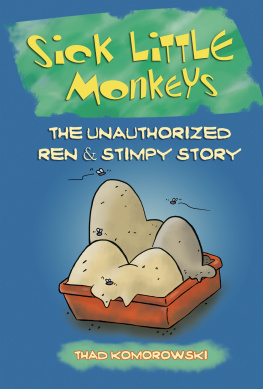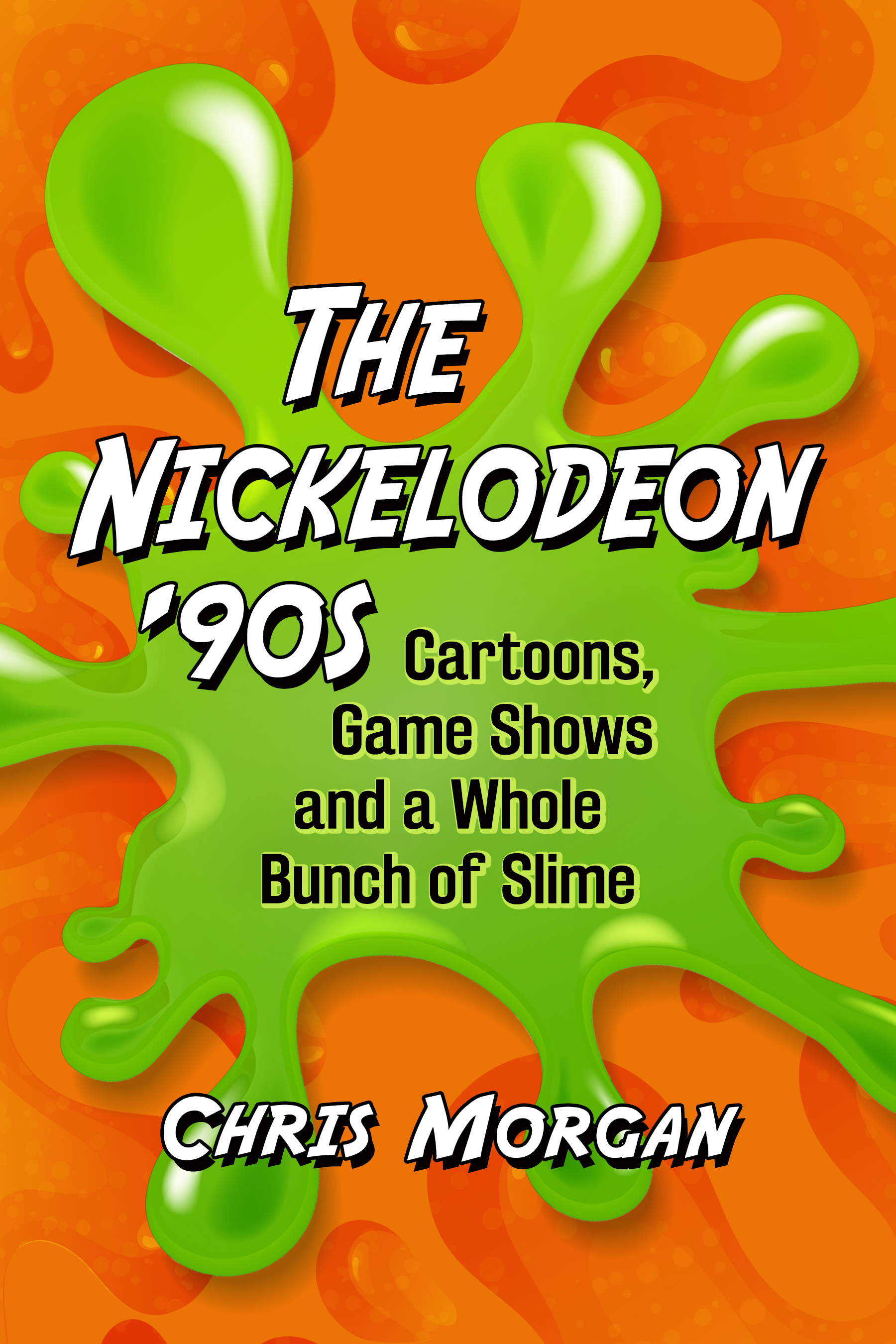The Comic Galaxy of Mystery Science Theater 3000: Twelve Classic Episodes and the Movies They Lampoon (McFarland, 2015)
2021 Chris Morgan. All rights reserved
No part of this book may be reproduced or transmitted in any form or by any means, electronic or mechanical, including photocopying or recording, or by any information storage and retrieval system, without permission in writing from the publisher.
Preface
What is this book?
Its The Nickelodeon 90s: Cartoons, Game Shows and a Whole Bunch of Slime. It lives up to that title.
So this book is about 90s Nickelodeon?
Yes, what I have done is write essays about every show that aired original episodes on Nickelodeon in the decade of the 1990s. Some of those shows began in the 80s and some of them ended in the 2000s, but they all aired episodes in the 90s. These are shows that were airing new episodes in the 90s, mind you. It does not include shows that had their rights bought by Nick so that they could show reruns.
What are these essays like?
I dont want to spoil too much, and I wrote a more proper introduction to this book as well, but I will try to satisfy your curiosity, imagined book reader. They are a mix of personal reflection and media criticism. I delve into the history of the shows, provide my personal critiques, and hopefully make them interesting reads. Personally, I like to think of it as something akin to a fun encyclopedia of 90s Nickelodeon, or talking to a cool, knowledgeable friend about the shows you loved back in the day and still love now. Yes, I just called myself cool and knowledgeable. No, I dont feel great about it, but Im trying to sell a book here. I also included as a little subheading on every chapter some lesson one could learn from the subject of that chapter.
Who are you, anyway?
Fair question! My name is Chris Morgan. I have been writing about pop culture personally and professionally for more than a decade at this point. You may have seen my work on websites such as Uproxx, Paste Magazine, IGN, and many, many more. Like, an almost distressing number of websites at this point. This is also not my first book for McFarland. I am the author of The Comic Galaxy of Mystery Science Theater 3000 : 12 Classic Episodes and the Movies They Lampoon (2015). I have been dedicating a generous portion of my life to entertainment since I was a child, and I have been writing about it for about the entirety of my adult life. Basically, it was inevitable I would write this book.
Are you going to talk trash about my favorite show?
Theres only one way to find out, and thats to keep reading.
Introduction: The Gak Generation
Someday you will die, but the 90s never will
In my early twenties, in a fit of anti-nostalgia, I threw out a bunch of my old stuff, especially school stuff like yearbooks. Right now, I bet you are super pumped that the book you bought about Nickelodeon is beginning with a banal and solipsistic personal anecdote. Im just illustrating the point that our relationship with the past, and with our past, can be complicated. I honestly dont miss any of those old yearbookswhat would I have done with them?but I have no qualms with the thorny concept of nostalgia like I did then. I also mentioned it because I dont want you to feel like this is going to be a book of rose-colored-glasses love for shows from the past. This is going to be fun, but it isnt going to be about me talking about how I loved a show when I was seven and therefore it is beautiful and pure and will never hurt me like the cruel, uncaring world we were born into. In fact, I dont intend to talk much about myself at all, except when necessary, because Im not as interesting a subject as Nickelodeon. Were all here because, in some way, shape, or form, Nickelodeon was a big part of our life, and we maintain some connection to it. Maybe its as pop culture devotees. Maybe its nostalgic. In the end, were all here because were all interested in the quintessential network of our childhood.
Back in 1977, when cable was a primitive beast, Warner Cable debuted 10 channels on QUBE, one of the earliest cable television systems. One of those channels was simply called C-3. All it did all day, from seven in the morning until nine at night, was run a TV show called Pinwheel . It was an educational program in the vein of Sesame Street or The Electric Company . People and puppets interacted and taught kids about sharing. There was a character named Ebenezer T. Squint, which was basically an Oscar the Grouch rip-off, right down to being green. After a couple years of this, Warner figured a rebrand, and an expansion, was in order.
On April 1, 1979, Nickelodeon was born. It was the first-ever TV network aimed at children and entirely for children. There werent ads at first, and Warner envisioned Nickelodeon as a loss leader. They wanted to be in the market of being a TV channel for children. It made total sense. Adults have busy lives. Children, especially in the summer, could plop themselves down in front of a TV for hours. They had a friend, and their parents had a babysitter. You hook those kids in as viewers, and someday when you debut ads you have a built-in audience. Then they grow up and they are watching other Warner networks because theyve developed an affinity for TV. You entertain kids, teach them some lessons, and in the end someday they grow up and spend their disposable income on the products they see ads for on television. I say this without cynicism, as somebody who was raised by television in some respects and regrets not a second of it.
Nickelodeon was chosen as a name over options like The Rainbow Network. The initial logo, along with the name, harkened back to the old-timey nickelodeon theaters. Its actually the only real connection anybody has to nickelodeons these days, given that weve all agreed to forget about Peter Bogdanovichs 1976 movie Nickelodeon starring Burt Reynolds and Tatum ONeal. They dubbed it The Young Peoples Satellite Network, which is a hilariously wordy and clunky tagline for a childrens network.
The networks first bit of indelible history came in 1981 when they began airing episodes of a Canadian sketch show for kids they had ported over. You may know it as You Cant Do That on Television . In addition to introducing us to Alanis Morissette years before she was writing tunes partially inspired by Dave Coulier, You Cant Do That on Television brought green slime into the childrens zeitgeist. When performers would say, I dont know, theyd get slimed. The slime proved so popular it became a fixture of Nickelodeon, especially on the Double Dare family of shows. The crew on that program nicknamed the slime gak, in reference to the street name for heroin. And from that bit of adult irreverence and drug slang, I got the name of this introduction.



